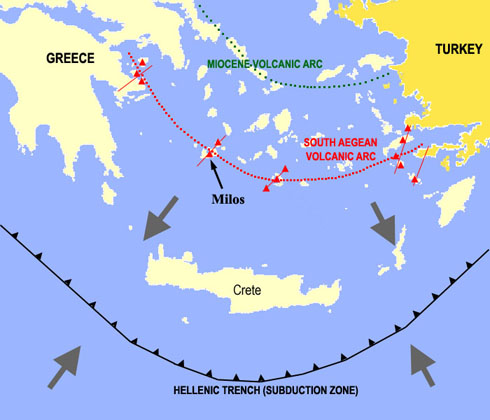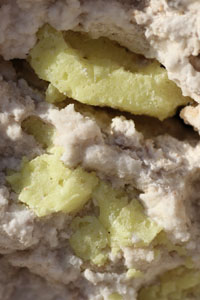View westward over Milos bay to highest point on island - Profitis Ilias (748m). Ch. Vouno (636m) is seen on right. Both are rhyolitic volcanic bodies.
View from north of Bombarda rhyolitic lava dome west of Adamas. In this area at Nychia, obsidian was mined as far back as 11,000 years ago

